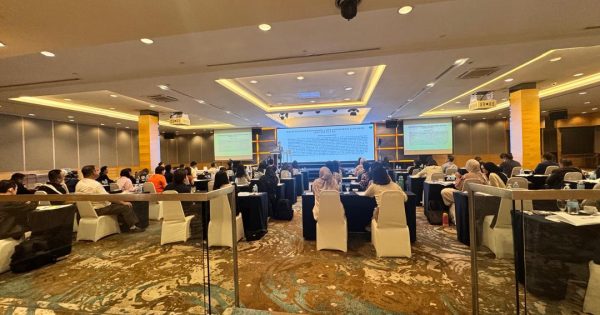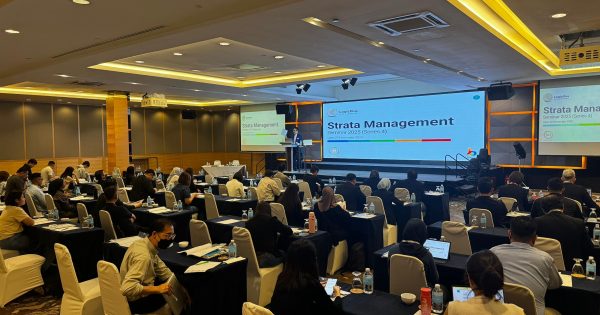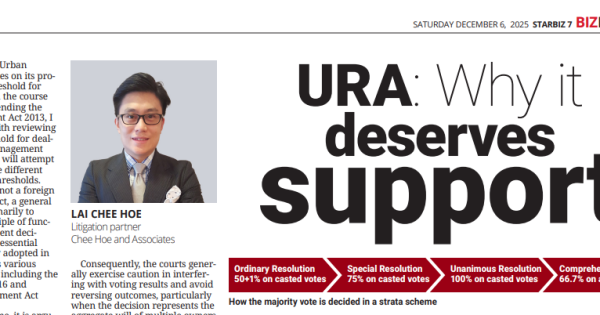
CASE UPDATE: CHONG NGE WEI & ORS v. KEMAJUAN MASTERON SDN BHD [2022] 4 CLJ 833
FACTS:
The Appellants are the parcel owners of 6 apartment units of a housing project. The Respondent is the housing developer of the said project. Aside from seeking liquidated ascertained damages (“LAD”) in respect of the late delivery of vacant possession, the purchasers sought to claim for damages on the basis that the developer had changed the building material for the outer brick walls (from autoclaved aerated concrete building block to flexcore) without their written consent. In this case, the building material is expressly stipulated in Clause 12 of the sale and purchase agreement (“SPA”). It undisputed that the developer had used flexcore instead of autoclaved aerated concrete building block, in breach of Clause 12 of the SPA. The primary question that arose for determination in the Federal Court relates to the assessment of damages and is as follows:
Question of Law:-
Whether a claim for damages for the purpose provided in Clause 12 of the statutory sale and purchase contract under Schedule H of the Housing Development (Control and Licensing) Regulations 1989 requires proof of actual loss to be shown before damages could be awarded?
DECISION:
High Court:
The High Court allowed the purchasers’ claim and ordered assessment of damages pertaining to the developer’s breach of Clause 12 of the SPA. During assessment, the purchasers produced a quotation prepared by a building contractor which stipulates the costs incurred to replace flexcore with autoclaved aerated concrete building block. The Senior Assistant Registrar (“SAR”) accepted the quotation as proof of damages and assessed damages to be in the sum of RM380,500, being the price quoted.
Upon appeal, the learned Judicial Commissioner affirmed the learned SAR decision.
Court of Appeal :
The Court of Appeal however, found in favour of the developer and reversed the High Court’s findings. The basis is as follows:
- The purchasers failed to prove loss.
- The quotation does not show the losses suffered by the purchasers.
- No further evidence to show that the repair works were done to the units.
- There was no evidence of any concluded or binding contract between the developer and the contractor.
The Court of Appeal found that Clause 12 is not a damage clause but only a clause that provides for the rights and obligations of the parties and the remedy available in the event of breach. The Court of Appeal is of the view that the change in construction material of the outer walls did not have any adverse effect or the value or purchase price of the properties.
Federal Court:
The Federal Court found in favour of the purchasers. The Federal Court applied the basis of assessment, which is to place the purchasers “in the same situation as if the contract had been performed.” Following that, it was held that the purchasers were prima facie entitled to the cost of replacing the flexcore with autoclaved aerated concrete building block as this would put them in a position to have the building material they contracted for. In this regard, the building quotation provided prima facie proof of the sum “which will meet the costs” of the remedial works.
TAKEAWAY:
This case once again witnessed how the Federal Court construed the provisions of the SPA in favour of the purchasers. Notwithstanding that Clause 12 of the SPA is not a damages clause and in the absence of actual loss, the court is minded to assess damages by placing the purchasers “in the same situation as if the contract had been performed”. From the perspective of a developer, strict adherence to the SPA, and in this case a prescribed Schedule H of the of the Housing Development (Control and Licensing) Regulations 1989 (“HDR”) is rudimentary and essential to avoid any unwanted liability when it comes to the claim of damages by the purchasers, be it in respect of late delivery or the breach of terms in the SPA.


